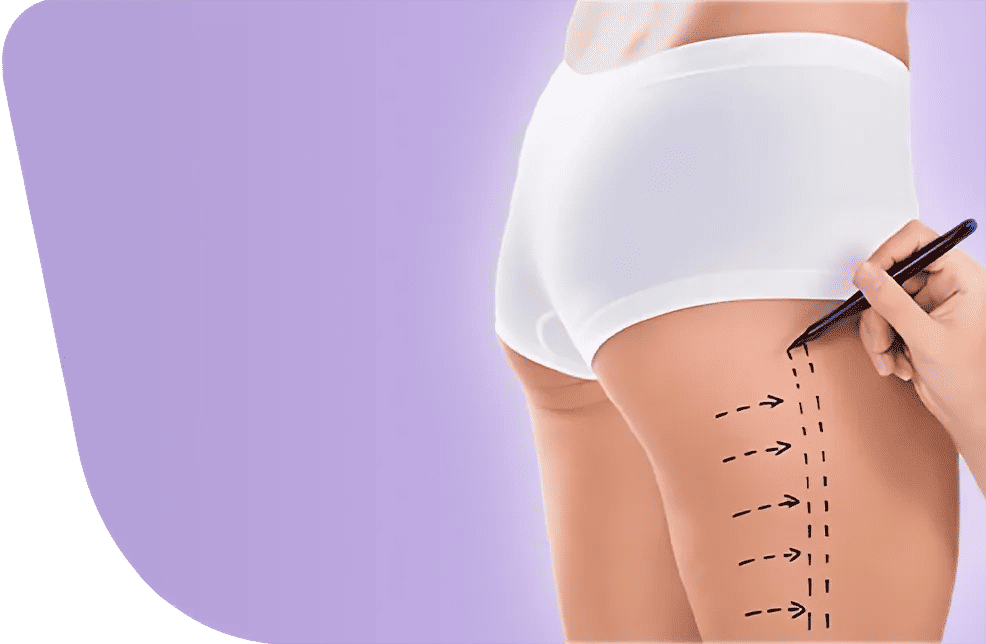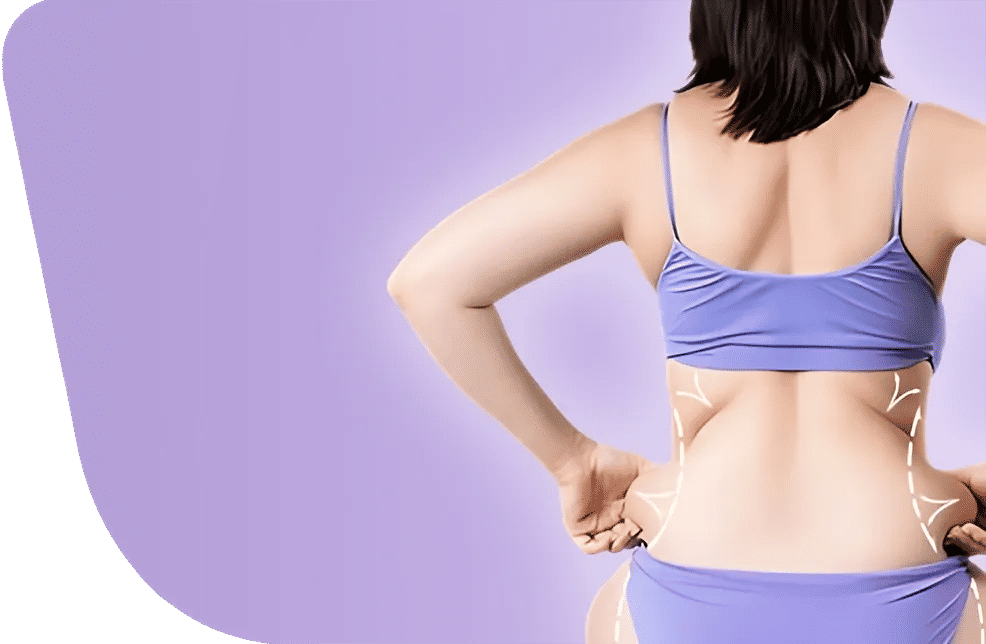- - What is Body Sculpting?
- - Is Body Sculpting Dangerous?
- - Is Non-Surgical Body Sculpting Safe?
- - Surgical vs. Non surgical body contouring risks
- - What Are the Risks Associated with Body Sculpting?
- - Is Home Body Sculpting Safe?
- - How to Minimize the Risks and Dangers of Body Sculpting
- - Get Safe Body Sculpting in Turkey with Turkey Luxury Clinics
- - FAQs About Is Body Sculpting Dangerious
Body sculpting has become an in-demand procedure, with increased focus on body shape and how it reflects self-esteem and people’s confidence.
Body sculpting is generally safe, whether performed surgically or through non-surgical technologies; however, it is not always risk-free.
Both surgical and non-surgical procedures, if not performed by an expert clinician and chosen by an ideal, qualified patient, can go wrong.
Mild side effects are common and may include swelling, redness (erythema), bruising, or mild pain.
More moderate issues can involve skin sensitivity, poor wound healing, or asymmetrical results. Surgical procedures may also lead to bleeding, scarring, infection, or anesthesia-related complications.
So, is body sculpting dangerous? What are the risks associated with this procedure, and how can you ensure safe and effective body contouring? Discover the answers with Turkey Luxury Clinics’ experts and make your decision with confidence.
What is Body Sculpting?
Body sculpting, also known as body contouring, aims to eliminate fat, reshape certain areas, and tighten the skin. Its safety largely depends on the method used.
Non-surgical body contouring techniques, such as cryolipolysis, laser, radiofrequency, or heat-based lipolysis, are generally safe despite the associated side effects, which also vary depending on the specific technique.
Non-surgical methods offer more subtle and gradual results compared to surgical body sculpting.
In contrast, Surgical body contouring procedures, such as liposuction or a tummy tuck, although they deliver more dramatic and long-lasting results, come with greater risks because it requires incisions and anesthesia.
As with any surgery, complications such as infection, bleeding, scarring, asymmetry, or fluid accumulation may occur.
For this reason, patients are encouraged to consult board-certified professionals and choose FDA-approved body tightening treatment approaches to minimize risks and ensure the best outcome.
Is Body Sculpting Dangerous?
Body sculpting procedures are generally safe when performed by qualified professionals, at accredited and reputable clinics, and for healthy individuals who are ideal candidates and able to follow proper post-treatment care.
FDA approves the use of many body sculpting procedures including Coolsculpting and other cryolipolysis procedures as safe for use.
What Are Factors That Increase Body Sculpting Risk?
Risks of body sculpting complications vary depending on your health, the type of procedure you choose, and the practitioner’s experience. Considering all these factors helps ensure safe and effective body sculpting with minimal risks. Never attempt any procedure if you are not an ideal candidate for it. Factors to be considered for safe body sculpting and contouring include:
- Patient Health: Underlying health conditions such as autoimmune disorders or poor circulation require careful evaluation before any body sculpting procedure. Certain conditions, including cryoglobulinemia, cold agglutinin disease, and Raynaud’s disease, can make some non-surgical methods particularly dangerous.
- Surgeon Skill: Having the procedure done by unqualified or uncertified surgeons increases the risk of complications. Likewise, inexperienced practitioners performing non-surgical techniques may cause burns or uneven results due to improper device handling.
- Procedure Type: Each body sculpting technique carries a different risk profile depending on its level of invasiveness and the technology used.
- Smoking: Smokers face a higher risk of poor wound healing, infections, and post-surgery complications, as smoking restricts blood flow and delays recovery.
- Patient’s Weight and BMI: A high BMI, especially in post-bariatric patients, is linked to greater risks of wound healing problems, infection, and fluid buildup after both surgical and non-surgical procedures.
Is Non-Surgical Body Sculpting Safe?
Non-surgical body sculpting like CoolSculpting (cryolipolysis), radiofrequency (RF) treatments, and ultrasound-based techniques is generally safer and carries far fewer risks than more invasive surgical procedures like tummy tuck, and liposuction.
Since non-surgical body sculpting doesn’t involve incisions or anesthesia, it eliminates common surgical risks such as infection, bleeding, scarring, and anesthesia reactions.
However, these treatments are not entirely risk-free. Mild, temporary side effects are relatively common but tend to resolve within a few days. Serious complications are very rare, though conditions like paradoxical adipose hyperplasia (when fat cells enlarge instead of shrink) have been reported.
Risks largely depend on the device used and having the procedure performed by qualified professionals. For example:
- Cryolipolysis (CoolSculpting): The primary device-specific risk is paradoxical adipose hyperplasia.
- Radiofrequency (RF) & Ultrasound: Risks caused by heat delivery from these devices can endanger nerves or cause excessive heating, which may lead to complications like fat atrophy or scar tissue formation.
- Light-Based Energy (Laser/IPL): Risks include burns, blisters, skin discoloration, and nodules; however, these are generally mild and cause fewer complications.
- High-Intensity Focused Ultrasound (HIFU): Potential risks include fat atrophy, significant scar tissue formation, and skin issues if overheating occurs.
You may also like: Non-Surgical Facelift: Costs, Results & Best Options
Surgical vs. Non surgical body contouring risks
Surgical body contouring is more risky, as it is invasive surgical procedures performed with a knife, makes incisions and needs anesthesia. It takes months of recovery and healing and can cause systemic and sometimes life threatening complications if not monitored well
What Are the Risks Associated with Body Sculpting?
Risks of body sculpting vary depending on the technique used but can include infection, scarring, pain, numbness, and swelling for both surgical and non-surgical procedures. Surgical body sculpting generally carries higher risks, while non-surgical options tend to have milder, temporary side effects.
Risks of Surgical Body Sculpting
- Infection and Bleeding: As with any surgery, there’s a risk of infection at incision sites and excessive bleeding.
- Anesthesia Complications: Some patients may experience nausea, vomiting, or allergic reactions related to anesthesia.
- Blood Clots: Deep vein thrombosis (DVT) can occur, and in rare cases, clots may travel to the lungs, causing a pulmonary embolism.
- Nerve Damage and Scarring: Surgical procedures can damage nerves or blood vessels, leading to pain, numbness, or visible scarring.
- Fluid Accumulation: Fluid buildup (seroma) can occur under the skin and may need drainage.
- Revision Surgery: If the results are unsatisfactory or uneven, additional procedures may be required.
- Downtime and Recovery: Surgical contouring typically requires weeks of recovery and limited physical activity.
Risks of Non-Surgical Body Sculpting
- Temporary Side Effects: Common effects include redness, swelling, bruising, tingling, or mild pain in the treated area. These usually resolve within days.
- Asymmetry or Uneven Results: Non-surgical fat reduction may occasionally lead to uneven contouring.
- Skin Irregularities: Some patients may notice changes in skin texture, pigmentation, or the formation of small nodules.
- Vascular Issues: Injectable treatments can rarely affect small blood vessels, leading to skin discoloration or tissue damage.
- Paradoxical Adipose Hyperplasia (PAH): A rare but notable side effect of CoolSculpting, where treated fat cells enlarge instead of shrinking. PAH is more common in men and typically requires surgical correction.
- Burns and Blisters: Heat- or cold-based devices may cause burns or blisters if not used properly.
For face contouring several non surgical options are now common with injectables like fillers and Botox among the most common options popular for their safety. Discover Facial Botox injection and fillers, and how it works to contour face.
Is Home Body Sculpting Safe?
Most at-home body sculpting devices like NuFACE NuBODY, COMFIER, Beurer massagers, LED/red light therapy, and low-intensity EMS devices are generally FDA-cleared for cosmetic use, which means they meet safety standards for home use.
Although they can be risky and may lead to serious complications like skin damage, burns, nerve damage, and ineffective results, as they lack the controlled technology and professional training of in-clinic treatments.
- LED and red light therapy rank among the safest options,and FDA-cleared for home cosmetic use as they are non-invasive, painless, and suitable for regular at-home use with minimal side effects when quality devices are used.
- Electrical muscle stimulation (EMS) is also safe for home body toning when intensity levels are kept moderate and sessions are limited; overuse may only cause mild muscle fatigue.
- NuFACE NuBODY (microcurrent toning) – Non-invasive EMS technology for muscle toning, safe when intensity is moderate.
- COMFIER Cellulite Massager – Multi-head vibration for cellulite, beginner-friendly and low-risk.
- Beurer Cellulite Massager – Gentle massage for beginners, safe with minor temporary redness possible.
How to Minimize the Risks and Dangers of Body Sculpting
- Use FDA-cleared or approved devices to ensure they meet safety and effectiveness standards for their intended use.
- Choose experienced, qualified, and well-trained professionals to perform the procedure and minimize complications.
- Maintain an ideal weight before treatment to improve results and reduce the risk of side effects.
- Prepare properly before surgery by following all medical instructions related to diet, weight management, smoking cessation, and medication adjustments.
- Be cautious with home body sculpting devices — use only FDA-approved options and follow the manufacturer’s instructions carefully to avoid burns, nerve damage, or poor results.
Read more about: Skin Tightening Treatments 2025: Modern, Surgical & Non-Surgical
Get Safe Body Sculpting in Turkey with Turkey Luxury Clinics
When it comes to body sculpting, safety and expertise matter as much as results. At Turkey Luxury Clinics, we partner only with JCI-accredited hospitals and board-certified plastic surgeons who specialize in advanced body contouring technologies like VASER, RF, and laser-assisted lipolysis.
Our team ensures that every patient receives transparent cost packages, qualified medical care, and comprehensive pre- and post-procedure support for a smooth, confident experience.
Turkey Luxury Clinics is your trusted clinic for high quality care and beautiful, natural results, all under world-class medical standards. Our experts will guide you and book for free consultation and price quote.
Interesting reads: Skin Tightening Cost: Surgical vs Non-Surgical & Advanced Techniques












.webp)
.webp)
.webp)
.webp)

